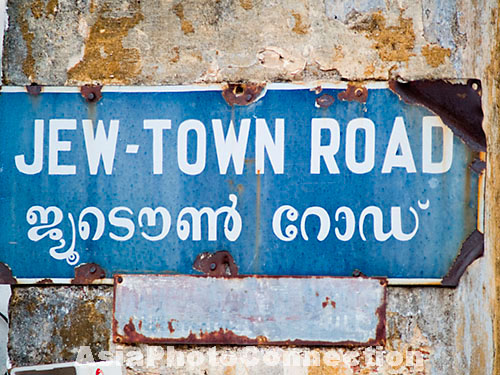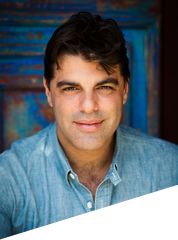
Kochin is a beautiful town in the state of Kerala, in the south of India. It is lush and green, spread out over both the mainland and several islands that dot a large natural harbour. The setting affords gorgeous views across the bay at every turn, so that you always have the feeling of being close to water. After coming from the heat-ravaged interior of southern India, this is a god-send, cooling the air and cooling the spirit. Even Kochin’s humidity is welcome: mixed with crisp sea breezes it keeps at bay the dust and grime that constantly follows you everywhere else in India.
[Context: When I finished law-school I set off on an extended voyage of discovery across Asia and Europe, with Camilla, my girlfriend at the time. This included backpacking in India for more than three months. I wrote a series of short stories about our experiences there. After a brief and unsuccessful attempt to see them published, they have languished in my cupboard ever since. Not many people have read them but recently, a friend who has suggested I should dig out my India tales, edit and “publish” them via this blog – an online book of sorts. There are 18 “chapters” in total, and from time to time I will post the next one, although each can be read standalone. In revisiting these stories now, almost two decades after they were written, it amazes me how little things have changed in India. In many respects, the events described back then could just as easily have happened today. I hope you enjoy].
Kochin’s watery setting also seemed to have a corresponding cooling effect on the town’s people, who were far more laid-back than their compatriots in other parts of the country. We walked the streets without being hassled; there were noticeably fewer beggars and hustlers to navigate; no-one tried to sell us the usual myriad of tourist crap that we neither needed nor wanted. In Kochin our stress and tension levels, built up over weeks of low-budget travel in India, began to melt away. No wonder that so many backpackers who visit this town wind up staying longer than planned.
On our first morning in Kochin, we set off by foot to explore Ernakulum, the part of Kochin on the mainland. It was like any other Indian town: a chaotic mess of buildings, streets, rickshaws, cows and people. After a short time on land we took to the water, riding a ferry across the wide blue bay to Bolgatty Island. It was a glorious day and the boat ride was utterly lovely – shimmering sea, sunshine and fresh air.
On the ferry, we struck up a conversation with a Frenchman. He was thin and wiry, and had eyes that seemed too big for his head, giving him a wild, crazy-man appearance. Southern India had affected him profoundly, to the point that he had chucked it all in and made his home there, commuting between his birthplace of Montpellier and his adopted home of Kochin. “I am having a love affair wiz Kerala”, he said in a thick French accent. He told us that he was doing “a leetel of import-export between Kerala and France”, and within five minutes of making our acquaintance, he had invited us to visit him in Montpellier one day, Gallic style: “You can come and do camping in my garden, if you like”, he said.
After we left the Frenchman, who was still muttering strangely to himself, we enjoyed a proper English afternoon tea at the Bolgatty Palace Hotel. It was a fine old British-era building, of the kind you find so often scattered around India, meaning that it was charming and endearing and more than a little bit romantic, but also quite literally falling apart at the seams.
That evening we went to see a traditional Keralan Katakali dance. We were advised to arrive at the venue early, so that we could watch the dancers put on their make-up. This turned out be even more of a performance than the dance itself. A big man had his face painted green and red, then oversized white cardboard gills were attached to his cheeks with glue, and finally colourful stripes and decorations were added. It took hours, but at the end of it all he looked quite ferocious. Which I guess was the point: later, during the dance, he pulled lots of faces, stomped, shouted, and stuck out his tongue, a routine that in days gone by was designed to scare enemies shitless.

And so we very pleasantly filled our first few days in Kochin – scenic walks, more boat-rides, long-lunches in backpacker friendly cafes, ambles through markets, and an unscheduled guest appearance in an Indian film (see the previous post: “My Day as a Bollywood Film Star”).
All of which was, for me at least, a warm-up to the main event. You see, I had travelled to Kochin for one specific reason – in search of Jews.
Obscure Jewish communities have always fascinated me. These “lost tribes of Israel” were supposedly dispersed to the four corners of the world after the conquest of Israel by the Romans, more than two thousand years ago. But despite centuries of isolation, persecution and intermarriage, these communities somehow managed to retain the essence of their Jewish identity, up until the present day.
My interest in the subject led me to write a short thesis comparing several “fringe” Jewish communities from around the world, as part of my undergraduate degree. This included Kochin’s Jewish community, which is about as “fringe” as you can get. It was thus a complete no-brainer that, when given the opportunity to visit this remote and ancient Jewish community in person, I would travel halfway across India to do so.
Legend has it that Jews first travelled to Kochin from Israel after the destruction of the First Temple. More reliable historical evidence suggests that Jewish traders reached southern India around the 6th century, and by the 1600 a permanent community had established itself in Kochin.
Centuries of intermarriage with the indigenous Indian population meant that these “original” Kochin Jews adopted many local characteristics – not just clothing and language and a taste for curry, but also a dark, south-Indian skin colour. For this reason, more recent Jewish arrivals to Kochin, who came from places like Baghdad, dubbed the older Kochin community the “Black Jews”, and applied the moniker “White Jews” to themselves.
The Jewish community of Kochin peaked in the 1930’s, at an estimated 5,000 people. Since then, the town’s Jewish population has been in terminal decline, with most members of the community, both “White” and “Black”, migrating in droves to Bombay or Israel or the USA; some have even made it as far away as Australia.
Fringe or not, finding what remains today of Kochin’s historic Jewish community isn’t all that hard. The old Jewish quarter, located on an island across the bay from Ernakulum, is nowadays the town’s premier tourist attraction. On every tourist map of Kochin it is identified simply as “Jew Town. Quite helpful, really, and not much chance of confusing it with something else.
I purposefully avoided visiting Jew Town until I had seen the rest of Kochin – kind of like a kid eating an ice-cream sundae, I was leaving the best for last. But on a sunny Friday morning I decided the time had come to do what I was in Kochin to do: to seek out my co-religionists, and perhaps join them for Shabbat (the Jewish Sabbath).

And that is how, after a journey of many thousands of kilometres and a final twenty-minute walk from the hotel at which I was staying, I arrived at Jew Town, Kochin, Kerala.
The first clue that I had arrived was the heady perfume filling the air, coming from the many spice stores. Colourful piles of nutmeg, mace and cloves lined the streets. Kochin’s Jews were heavily involved in the Malabar Coast spice trade, and even today the old Jewish area of Kochin remains a major spice trading centre.
.
The second clue that I had arrived in Jew Town was a convenient and rather prominent street sign: “Jew Town Road”. No chance of making a mistake on that one.
Walking along, I instinctively began looking for signs of the area’s Jewish past – Hebrew lettering on buildings, Stars of David, Jewish business names. The best I could find were a few niches on the door-frames where mezuzah’s (small payer scrolls in decorative casings affixed to the right doorpost of every Jewish home) would have been placed. But the population of Jew Town appeared to be as Indian and non-Jewish as anywhere else in the country.
That is, until we came to Synagogue Lane, a narrow alley that runs off Jew Town Road. There, I saw small plaques besides the front door of each house that told of who lived within: Cohen – advocate; Moses Family; even one saying “Welcome” in Hebrew. So I had found them – as the community had shrunk, the few remaining Jews in Kochin had progressively retreated to this one small street, like a puddle of evaporating water.
At the end of Synagogue Lane is Kochin’s historic Pardesi synagogue. There were a few tourists around, and as I approached one told me in passing: “don’t bother – the synagogue is closed for a Jewish holiday”. I had completely lost track of time in India, but being April I figured the holiday was most likely Pesach (Passover). Well, that was just fine with me – not only would I get to meet what remained of Kochin’s Jewish community, but I would get to celebrate a festival there, too.
I returned to the synagogue that evening. In an effort to look mildly respectable I had shaved and then raided the deepest recesses of my backpack, extracting my least wrinkled items of clothing. The front door of the synagogue was shut, so I knocked, and waited. After a few moments it opened just a crack, and a young man with a moustache poked his head out and informed me curtly: “the synagogue is closed until next week”. He immediately began closing the door, so I had to be quick: “look, I’m a Jew, I’m from Australia, and I would like to come in for the Pesach prayer service”.
My use of the Hebrew word for Passover obviously had some effect, as the man at the door paused and scrutinised me closely for a few seconds. “How do I know you’re Jewish?” he eventually asked. This was quite frankly an unexpected, not to mention slightly offensive question, and my first thought was to drop my jeans then and there, and show him the answer. But on second thought it occurred to me that this was probably not the best way to gain access to a synagogue. Instead I hastily recited the first few lines of the She’ma – one of the few Jewish prayers I know by heart. That seemed to do the trick – the man at the door opened it just wide enough for me to pass through, and beckoned me to enter.
The Kochin synagogue is a bona-fide work of art. It is amongst the most beautiful synagogues I have ever been privileged to see. Dating from the 15th century, it has magnificently carved wooden chairs and benches, ornate brass chandeliers, and a stunning ark at the centre. The synagogue’s crowning glory, however, is in fact underfoot: a floor that is made up of over four-hundred blue porcelain tiles in the Chinese style, which at first glance appear identical, but, as an old man seated next to me pointed out, each tile is a unique handcrafted piece; no two tiles have the same picture.

There were only nine mostly elderly men in the synagogue that evening, so my appearance meant that there was a minyan (a quorum of ten adult men, necessary for a full Jewish prayer service to occur). One of the old men told me that this was an increasingly rare event, although he said proudly that there had been more than twenty people present for the first night of the Passover holiday, and only last year they had celebrated a bar-mitzvah in the synagogue.
I sat quietly on a bench at the side of the synagogue, participating in the prayers, and admiring the gorgeous synagogue building at the same time. The synagogue is in the Sephardi style, typical to Jewish communities from the Levant and Middle East, and quite different from the European-inspired synagogue architecture that I am more familiar with from Ashkenaz Jewish communities, like in Australia and the USA. It was quite beautiful, although also a bit haunting, to hear the feeble voices of those present echoing around the central dome.
After the service I introduced myself, and for about twenty minutes sat chatting amiably with the last remnants of what was once a thriving Jewish community. Len, the synagogue guardian, told me that today there are fewer than thirty Jews left in Kochin, but that their sense of Jewish identity is strong. Another man quizzed me as to whether I knew his family, now resident in Melbourne (I didn’t). Unprompted, all of the old men made a point of defending their decision to remain in Kochin, rather than leaving along with their extended families. It all sounded slightly forlorn and sad though, in the way that a dying person might try to explain their actions on earth once they know it is too late.
I returned to the synagogue the following day for the longer Saturday prayer service, where I was honoured by being called up to the ark to recite a blessing before the weekly Torah reading. As on the previous night, I was not invited for a Sabbath meal to someone’s home, which I had hoped for. But the congregants were old, and it would have been an imposition on my part, and an effort to accommodate me on theirs.
After the prayer service, the synagogue guardian invited me to return to the synagogue during the coming week, and said that he would give me a private guided tour. But I never did – we left Kochin the following morning. I had found what I had hoped to find in Kochin, and that was enough for me.
In fifty years there will almost certainly be no more Jews in Kochin, and a Jewish community that lasted for thousands of years will have become yet another footnote in the long history of our people. But in my mind the Jews of Kochin will always be there: frail old men, walking home from the synagogue, on Jew Town Road, on a hot, south Indian Friday night.

[The next post in this series will be in about four weeks time: Chapter 9: The Backwaters of Kerala]



